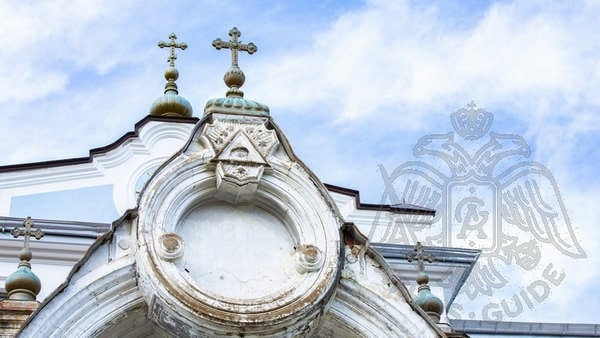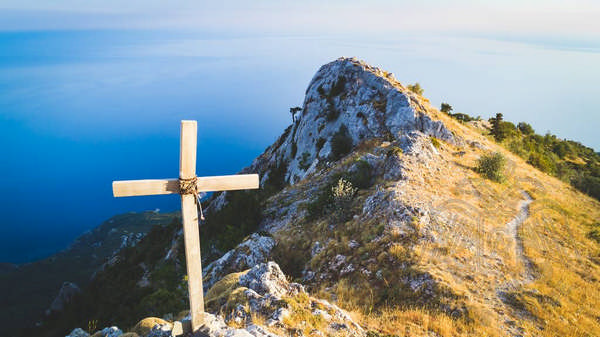External Interventions and Political Defense

On the 3rd of October 1913, after an overnight vigil, a council was organized in Mount Athos, attended by the representatives of the 20 monasteries of the Athonite state. The meeting took place in the church of the Protaton, in front of the icon of the Mother of God "Axion Esti". By a general vote it was decided to maintain the autonomy of Mount Athos, to set the monastic community under the spiritual guidance of the Ecumenical Patriarchate and under the protection of the Greek state. The possibility of intervention by any other Orthodox state, in order to ensure the security and protection of Mount Athos, was rejected. A relative request was submitted to the Ecumenical Patriarchate.
The International Council, convened in London in November 1913, worked on the remarks of the Mount Athos meeting. The following provisions were thus laid down:
- Mount Athos maintains its autonomous status. According to tradition, Athos is governed by the Protaton, which consists of the representatives of the 20 monasteries.
- The presence of police is allowed on Mount Athos in order to ensure order and to patrol the coastline with small boats.
- Orthodox international communities have the right to lease the lands of Mount Athos for the housing of monks.
- All newly arrived monks are subject to the statutes of Mount Athos and its internal governing body.
After the definition of the international recognition of Mount Athos, the next step was to settle the statutes within the Greek state. In 1926, a special committee of 5 elected monks drafted the Constitutional Charter, which consisted of 188 articles and included the basic provisions of all previous charters. In the same year, a special legislative committee in Athens approved this document. The Greek Constitution of 1927 ratified the Charter of Mount Athos. With the state support, the athonite community was recognized as an autonomous republic.
Economic Status

When Mount Athos lost numerous territories to Romania, Russia and Turkey, the monasteries of the Greek territory were equally threatened with expropriation, given the country's new legislation on agriculture. The Asia Minor catastrophe led to the displacement of large populations, resulting in a huge number of refugees needing to settle in new territories. The lands of Mount Athos, which included fields, forests, olive groves and pastures, were perfectly suited for this purpose. The athonites agreed to give to the refugee populations their land, while the state promised to compensate them financially. The athonites hoped to retain ownership of the land and continue to lease it in long term. However, the Greek state treated these lands as a loan, which would be paid back annually at a rate of 6%. In 1933, the lands of Mount Athos were valued at 250,000,000 drachmas, with each monastery entitling to the corresponding amount of 15,000,000 drachmas per year.
In 1944, with the cancellation of all state loans, the debts to Mount Athos were cancelled. Athos received an annual grant to cover the needs of the 20 monasteries, the maintenance of the infrastructure, the survival of the monks and the reception of thousands of pilgrims. However, this amount of money was much less than the required amount. Some of the costs were covered by the State, while the rest was provided by the export of chestnut logs, olive oil and grapes. A small part of the revenue came from the land of Chalkidiki that had fallen into the possession of Athos. Some monasteries invested their capital in the purchase of real estate in towns and villages outside the athonite territory. The huts and cells covered their expenses through agriculture and the various workshops that had been developed. The income of the Holy Community came from the contributions of the individual monasteries to the general fund, where they paid 3% of their profits. The Athos fund was further supported by the diamonitirion of the monasterys’ pilgrims.
Population of Mount Athos
The population of Mount Athos in 1910 was 9,900 monks. However, in the following years it began to decrease significantly. One of the reasons for the decline was the cessation of the arrival of monks from Russia and other northern countries. The deteriorating economic status contributed equally to the decline in the population.
| Year | Number of Monks |
|---|---|
| 1910 | 9900 |
| 1914 | 6355 |
| 1935 | 3817 |
| 1951 | 2043 |
| 1961 | 1649 |
| 1965 | 1491 |
| 1968 | 1236 |
| 1971, 1972 | 1146 |
| 1974 | 1200 |
.jpg) Mount Athos and the Ecumenical Patriarchate
Mount Athos and the Ecumenical Patriarchate
From 1924 onwards, the quality of the relationship between Mount Athos and the Ecumenical Patriarchate changed, as discontent prevailed after the latter adopted the Gregorian calendar. The athonites were strongly opposed to this innovation. The monasteries of Athos, except for the Holy Monastery of Vatopaidi, did not embrace the change. Many monks abandoned their monasteries and retired to cells, refusing to mention the Patriarch in their prayers. Another reason that influenced the relationship between the two parties was the dialogue opened between the Ecumenical Patriarchate and the Western Catholic Church, as well as the meeting of the Patriarch of the Orthodox Church with Pope Paul VI in Jerusalem in 1964.

